My newest novel, The Everything Machine, is now available on Amazon’s Kindle store. And thereby hangs a tale. A long tale. I don’t think I’ll be able to tell the whole story today. What I’ll do instead is post the book’s description on Amazon:
Carrying 800 passengers and their household goods, agricultural animals, and farm-related supplies to Earth’s first interstellar colony, starship Origen’s hyperdrive self-destructs, marooning its passengers near an Earth-twin planet orbiting an unknown solar-twin star. While settling in, the inadvertent colonists name their world Valeron, and discover that Valeron is scattered with hundreds of thousands of alien replicator machines—but there are no aliens nor any other trace of them.
Each replicator is a shallow 8-foot-wide black stone-like bowl half-full of fine silver dust. Beside the bowl are two waist-high pillars about 8 inches in diameter, one pale silver, the other pale gold. Tap on either pillar, and the pillar makes a sound like a drum, one pillar high, the other low. Tap 256 times on the pillars in any sequence, and something surfaces in the bowl of dust. Simple sequences create simple and useful things like shovels, knives, rope, saws, lamps, glue and much else. Complex or random sequences create strangely shaped forms of silver-gray metal with no obvious use. 256 taps on the pillars can create any of 2256 different things; in scientific notation, 1.16 X 1077.
That’s just short of one thing for every atom in the observable universe.
The artifacts are dubbed “drumlins,” for the sounds the pillars make, and the replicators called “thingmakers.” Drumlins have strange properties. Although virtually indestructible, drumlins can change shape, especially when doing so will protect a human being from injury. Drumlin knives will not cut living human tissue, but they will cut living animal tissue or human corpses. Press a drumlin knife against your palm, and it will flow and flatten out to a disk. Pull the knife away, and it will slowly return to its true form as a knife. Some claim that drumlins read human minds and grant wishes. Others insist they are haunted by invisible and perhaps hostile intelligences.
After 250 years on Valeron, the colony prospers. Starship Origen is still in orbit, and a cult-like research organization called the Bitspace Institute vows to repair Origen’s hyperdrive and return to Earth. With millions of drumlins catalogued using the thingmakers, Valeron’s people live well and begin to lose interest in returning to Earth. This threatens the Institute’s mission, prompting it to launch a covert effort to undermine public faith in drumlins. A low-key war begins between the Institute and those who value drumlins–including farmers, other rural folk, an order of mystical women, and several peculiar teen girls who have an unexplained rapport with the thingmakers and their mysterious masters.
The ebook is $3.99. The 377-page paperback is $14.99. The cover was designed and drawn by artist/author/Renaissance woman Cedar Sanderson.
The storyline defies easy categorization. Looked at from one angle it appears to be hard SF. There are starships. And AIs. From another angle it looks like a space western. The Republic of Valeron resembles America in the early 1890s. Valeron City, the capital, has just started running streetcar lines down its main streets, powered by a new dynamo on a river upstream from the city. People ride horses. They pack 6-guns. (Or, if you’re in the Bitspace Institute, 11-guns.) Thingmakers and drumlins are everywhere. There are pinlamp drumlins in many different sizes. Lighting is provided by pinlamps. The thingmakers can provide most other household goods as well, although the thingmaker’s size limits its creation of larger objects. The Institute is developing vacuum tubes and 2-way radios. The Grange (a farmers’ organization that might be characterized as rural Masons) has drumlin radios—and keeps them a secret.
I don’t want to spill a great deal more here. There are a lot of ideas, but in truth, what I was striving for in this novel are interesting characters who struggle, learn, and grow. Characterization was always the hardest part of writing my own fiction. I took great pains this time to make my characters come alive, and my alpha readers seem to think I succeeded.
So go get it. And if you like it, please review it—not only on Amazon but on your blogs and social network accounts. The biggest problem indie authors face is reader discovery. I’m going to post notices on X and Facebook and see how things go. My guess is that characterization is a cakewalk next to indie book promotion.



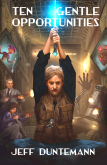

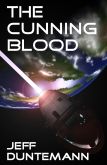

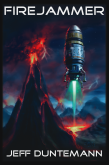
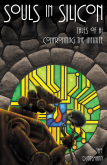
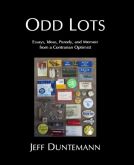
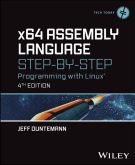

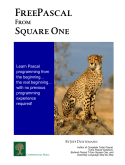
Hi Jeff, I just downloaded the book on my Kindle. Look forward to reading it!
This premise invites a lot of questions.
256 taps on the two pillars: i.e. taps on silver are 1s, taps on gold are 0s (or vice versa). Is that right?
Does the tap have to be on the top of the pillar? Is the top flat? What is the minimum force or energy of a tap? They are outdoors; does the impact of a raindrop or hailstone count as a tap?
What is the minimum interval between taps? What is the maximum interval? Suppose A issues 100 taps and goes away. B comes along later, and begins a known 256-tap sequence. Will the maker pop out something unexpected after 156 additional taps?
How long between the completion of a sequence and the appearance of the result? Is there perhaps a completion signal issued by the maker?
“Simple sequences… Complex or random sequences…” What defines “simple”, “complex”, and “random”?
What is underneath these structures? Does local geology give any clue as to how long they have been in place?
“shovels, knives… saws…” Do these tools have handles? Do the handles fit human hands? “…lamps…”? Is there an identifiable source of energy for these lamps? Do they have switches?
I suppose some of this is addressed in the book.
Most of this is covered in the book, but I’ll post a few notes here.
The two pillars are indeed a 1 and a 0. Gold=1, silver=0. You tap on the top surface of a pillar. Touching the pillar elsewhere has no effect. The taps must be made by a living human hand. Animal paws or other artifacts that are not living human hands won’t work, nor a corpse’s hand operated by a living human holding the corpse’s arm.
All 256 taps must be made within a limited time frame, which I never precisely defined, but is in the vicinity of 10 minutes. After 10 or whatever minutes, if all 256 taps have not been entered, the thingmaker purges the partial drum and goes back to its usual dormant state.
The thingmaker dust starts to churn as soon as all 256 taps are entered. That’s the sign that it’s working. It might take a few minutes for the drumlin to form and come to the surface of the dust. The time to construct a drumlin is not the same for all drumlins, apart from a general trend that larger drumlins take more time than smaller ones.
People who have dug soil out from under a thingmaker see a polished black pillar going down from the bottom of the bowl, about 70% the diameter of the bowl. No one has ever dug down far enough to find the end of the pillar. Nor will they, promise.
This universe (the same as the one in The Cunning Blood) allows relatively easy zero-point energy generation.
The identifiably human drumlins (those shovels, knives, forks, and much else) are all shaped and scaled for use by humans. How and why this is done is explained, but it would be a serious spoiler to talk about it here.
A simple sequence would be as simple as 256 taps on one pillar, or 128 taps on each in alternate order. Repeating simple sequences ramps up the complexity of the created drumlin. Random taps on the pillars in no pattern creates blobs of indestructible metal or unbreakable glassy items with no obvious use.
I hope this helps. Again, I could say more but I don’t want to be putting spoilers out there.
“Republic of Valeron”
Is this a nod to Doc Smith? Or just a naming coincidence?
Yes, it’s a salute to Doc Smith. I still have all of the Pyramid MMPBs, which date back to the midlate ’60s. I devoured them when they were new and now keep them for the cover art. If I would try to read them, I’d need stronger reading glasses, but even then, the pages would probably fall out. Like the pulps, MMPBs were created to be read once and tossed.
If you do read The Everything Machine, read the notice that the crew taped over starship Origen’s controls when they abandoned the starship in orbit around Valeron. It was a salute to Doc Smith, and also to someone else.
glad to see another book come out…I already purchased the Kindle version
I just started reading and it is very enjoyable. I really liked your prior Drumlin pieces.
Finished reading the “The Everything Machine” and thoroughly enjoyed the book. Well done!